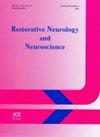贝宁共和国帕拉库大学教学医院脊柱枪伤的处理
IF 1.6
4区 医学
Q4 NEUROSCIENCES
引用次数: 0
摘要
目的:探讨脊柱枪伤的临床特点及取出子弹的方法。患者和方法:从2015年到2021年,我们报告了在parakou大学神经外科单一中心连续治疗的5例GSW伴脊髓损伤的病例系列。结果:患者年龄16 ~ 40岁(平均27.4岁)。所有患者均为男性。3例完全性胸段脊髓损伤(ASIA A), 2例腰椎水平损伤伴马尾综合征。一例胸椎高速枪伤致持续性脊髓损伤患者的外科和康复治疗及其结果。采用开放手术进行减压和取出子弹。胸椎脊髓病变伴延伸性损伤的患者预后较差。不完全性损伤患者随访良好,神经功能恢复良好。术后无伤口感染、脑脊液(CSF)瘘或其他与手术相关的并发症。结论:手术减压和取出子弹是一种安全的技术,可以帮助降低胸腰椎GSW患者术后感染和脑脊液瘘的风险。本文章由计算机程序翻译,如有差异,请以英文原文为准。
Management of gunshot wounds to the spine at Parakou University Teaching Hospital In Benin Republics
Objective: Describe the clinical features and bullet removal in gunshot wound (GSW) to the spine. Patients and methods: From 2015 to 2021 we present Case series of consecutive five cases of GSW with spinal cord injury treated at a single center of parakou university neurosurgery department. Results: Patient ages ranged from 16 to 40 yr (mean: 27.4 yr). All the patients were male. Three had complete thoracic spinal cord injury (ASIA A), two had lumbar level injury with cauda equina syndrome in one case. Surgical and rehabilitation management, as well as the outcome, of a patient who with sustained spinal cord injury from a high velocity gunshot wound to the thoracic spine. Decompression and bullet removal were performed using an open surgery. The patient with thoracic spinal cord lesion associated with extended injuries related to bullet fragmentation have a poor prognosis. The patients with incomplete injuries had a good follow-up and neurologic recovery. There were no postoperative wound infections, cerebrospinal fluid (CSF) fistulas, or other complications related to the procedure. Conclusion: Surgical decompression and bullet removal is a safe technique that may help reduce the risk of postoperative infections and CSF fistulas in patients with GSW to the thoracic and lumbar spine.
求助全文
通过发布文献求助,成功后即可免费获取论文全文。
去求助
来源期刊
CiteScore
5.40
自引率
3.60%
发文量
22
审稿时长
>12 weeks
期刊介绍:
This interdisciplinary journal publishes papers relating to the plasticity and response of the nervous system to accidental or experimental injuries and their interventions, transplantation, neurodegenerative disorders and experimental strategies to improve regeneration or functional recovery and rehabilitation. Experimental and clinical research papers adopting fresh conceptual approaches are encouraged. The overriding criteria for publication are novelty, significant experimental or clinical relevance and interest to a multidisciplinary audience. Experiments on un-anesthetized animals should conform with the standards for the use of laboratory animals as established by the Institute of Laboratory Animal Resources, US National Academy of Sciences. Experiments in which paralytic agents are used must be justified. Patient identity should be concealed. All manuscripts are sent out for blind peer review to editorial board members or outside reviewers. Restorative Neurology and Neuroscience is a member of Neuroscience Peer Review Consortium.

 求助内容:
求助内容: 应助结果提醒方式:
应助结果提醒方式:


